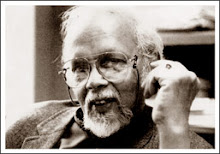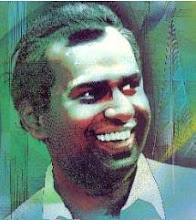Source:Virtual Library
Date: 19/02/2006

The Tower Hall has been one of Colombo's landmarks for nearly a century. It was built early in the 20th century and opened for public performance in December 1911. It was the only proper theatre in Colombo or anywhere else in the island, in the first half of the 20th century.
The Tower Hall was built by G. Don Hendrik Seneviratna of Heiyantuduwa, Kelaniya.
In 1883, the Elphinstone Dramatic Company of Bombay, also known as the Baliwalah Company, staged plays in Colombo. They were very popular and were soon followed by other theatre groups and musicians. Our own people began to write plays like those staged by the Indian theatre groups, and going to the theatre became very popular.
Hundred years ago, people had plenty of leisure time unlike now, but had little to do in their free time. There was no cinema to go to, and no radio to listen to. Going to the theatre was one form of entertainment for those who could afford it.
For a full 20 years before the Tower Hall was built, John de Silva was writing and producing plays and drawing large crowds to see them. There were other dramatists too, like Charles Dias whose plays were as popular as John de Silva's.
Going for the plays became so popular, that, in the first decade of the 20th century, there were about 40 play-houses in Maradana and Pettah. They weren't proper halls for staging plays. Some were wooden sheds with thatched roofs, while some were zinc sheds. One such hall was called the 'Belek Hall' (Tin Hall).
It was Edmund Seneviratne, the third son of G. Don Hendrik Seneviratne, a theatre-fan, who had persuaded his father to build a proper theatre. The popularity of his own son-in-law Charles Dias' plays must have given Hendrik Seneviratne the confidence to go ahead with the project.
The Tower Hall was built on Panchikawatta Road that runs alongside the Maradana railway station. The land belonged to Hendrik Seneviratne, who had earlier leased it as a park for horse-carts. There were no cars or buses then, and the horse-carts were the mode of transport for people with money.
Work on the hall was begun in 1909 and completed in 1911. It was built on the model of the Grand Theatre in Bombay, with a proper stage with curtains that could be drawn, and a balcony and proper dressing rooms.
It had 1,500 seats. The clock tower, which is its distinctive architectural feature, has given the hall its name, and it is usually referred to simply, as the 'Tower'. This tower is said to be a copy of the tower in London's Tower Bridge, which lies across the Thames river.
The hall was opened at an auspicious time on the morning of December 6, 1911 by Anagarika Dharmapala. The same evening Pandukabhaya, written and produced by Charles Dias, was staged under the patronage and presence of the Governor, Sir Henry MacCallum. That performance opened a new chapter in the history of Sinhala theatre.
From then on, a play was staged every evening. They were mainly Charles Dias' plays, such as Padmavathy, Sivamma Dhanapala, Alladin Saha Puduma Pahana and Mayawathy. Later John de Silva's plays too were staged here, and other dramatists brought their own plays to the Tower.
For two and a half decades, that is, till the mid 1930s, going to the Tower Hall to see a play was an enjoyable way of spending an evening, and Annie Boteju and Luxmibai the names of play actresses, became household words.
With the arrival of movies, people were drawn away from the theatre. Also, plays on contemporary themes staged by new drama groups like the Minerva Players had a greater appeal than the Nrtta of the Tower Hall - the historical plays and the dramatised Jataka stories. Further, by the mid-1930s, Maradana was becoming crowded and commercialised.
Attempts made in the first two or three years after independence to review Nrtta plays and attract theatre-goers to the Tower Hall failed. It became a cinema hall. The building remained like a rock in Maradana, the clock striking the hours; but by then, Maradana was a busy unclean commercial hub and shunned by the leisured class and the new theatre fans.
It was Ranasinghe Premadasa, when he was Prime Minister, who resurrected the Tower Hall and brought it back to its former glory. With a 40 million Yen grant given under the Japanese Government's Cultural Grant Aid Programme, lighting equipment was bought and installed, the hall repaired and refurbished and facilities upgraded. The 'born-again' Tower Hall was opened in September 1979 with the staging of Siri Sangabo, produced by Henry Jayasena.
Once again, the Tower Hall is a theatre where plays are staged, girls perform their Bharatha Natya Arangetrams, and pre-schools have their year-end concerts. It is also the venue for many a Kala-Ulela, cultural festivals.




































No comments:
Post a Comment